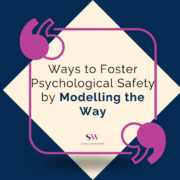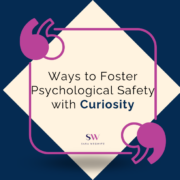
In organizations, it is an uncontested finding that high psychological safety drives performance and innovation, while low psychological safety incurs the disabling costs of low productivity and high attrition. Building on this, given the nature of events and uncertainties that continue not only to unfold on the world stage but also in our workplaces and lives, it only makes sense that committing to leading and modeling the way for others through psychological safety is critical. If you are keen to look for ways to foster more connection, compassion, and curiosity and discover strategies to model the way for others read on for the fourth and final installment of this series on psychological safety.
In Kouzes and Posner’s book “The Leadership Challenge”, they deep dive into the five practices of exemplary leadership as uncovered by their research. One of these practices is modeling the way for others. In this chapter of the book, they explore the importance of leaders clarifying their values and setting an example through personifying their values. Exemplary leaders don’t just espouse their values they live them through their actions. When it comes to psychological safety and modeling the way for others it only makes sense that it emanates from the leader of the group through their action, speech, and behaviours which in turn helps shape the culture in a workplace. In my experience in working with teams, there tends to be a propensity toward an underlying belief that everyone on the team is waiting for the leader or someone else to go first. Team members temporarily forget that they too can lead from where they are and with what they have regardless of their rank, role, or position in the organization. In fact, they too play an important role in creating, shaping, and maintaining psychological safety in their workplace. Let’s now explore ways we can model the way for others in our workplace and in life!
Own and admit your fallibility. Less bravado; more humility. Too often we fall into the thinking trap that as leaders we must have all the answers or at least look like we do for if we don’t, we will look incompetent. This is a trap, and this thinking can lead to more self-censorship amongst team members, people taking fewer risks for innovative solution finding, sharing their ideas, and identifying problems ergo less psychological safety. Leaders can show their fallibility by sharing that they might not have the whole picture and inviting others’ input on how to approach something to ensure it is correct. A significant memory that stands out for me is when I worked in ICU. During patient rounds one morning our Intensivist (Intensive Care Specialist Physician) asked me for my input on the best course of care for the patient I was looking after. He sensed my disbelief that he was asking this of me, the newest ICU team member, and said something along the lines of “Sara, I am human just like you and also have blind spots just like you. I want to make sure we get things right and provide the best care here for our patients. As the most responsible nurse for this patient, help me understand what I might be missing and from your perspective, what you think might be our priorities are to deliver the best course of care to achieve a successful outcome for this patient.” In that moment, I felt like I was a part of the team, that my perspective mattered and that my contributions were not only invited but were valued. Owning and admitting your fallibility can sound like: “What am I missing here?” “I need your help. I want to make sure I have this right.” “Ok everyone, I need extra sets of eyes on this matter. Let’s put our heads together to solve X.” Be vulnerable and humble about not having a clear plan or having all the answers and let your team know that you will do your best to find answers or share information as it is available. Be open about how you’re thinking about managing your own challenges and be integral with your word. If you’re not willing to be candid with your team members, why should you expect them to be candid with you?
Taking Stock – We are here. To create different results and build something sustainable it’s important to have an honest conversation about the current state of things. Leaders must be willing to see things clearly, as they are not worse than they are, and no matter the outcome. Leaders must understand the notion that trust is built on honest and open communication. Trust comes from an open dialogue about the current state. One of the ways you can foster trust and psychological safety is to have an honest discussion of the status of psychological safety in the workplace. This offers the opportunity to take stock and get clear on where the workplace is now so that the team can better create where they want to go from here. Some strategies that can assist with this discussion are:
- Set the pre-frame – provide clear messaging about the background for the upcoming discussion; what is going to happen; why this discussion is important; and what’s in it for the team member
- Involve the team from all facets of the organization in this discussion
- Encourage diverse perspectives from a variety of roles. Do not cherry-pick team members who you think will tell more of what you want to hear
- Hire a skilled facilitator/team coach so that all members including the leader can fully participate and be heard. This allows for a safe space for all members to have their voices heard and ensures a productive and fruitful discussion
Once the current state is known, then you can explore, build, and create what the inspired shared vision of psychological safety can look like in your organization. From here you can begin to take those first few actions to make it become a reality. Action makes the vision real.
Lead by example; consistency is key. Words are cheap, and when it comes to psychological safety, there are far too many stories of managers who demand candor from their employees — to lead by example — without demonstrating it themselves. How you show up matters and impacts those around you that you live and work. Your energy is contagious. In the wise words of Simon Sinek, “Words may inspire but only action creates change.” To assist you in this practice of leading by example, you may wish to test-drive the following strategy. Take a few minutes each morning to reflect on the day you have ahead and ask “How will I foster psychological safety today? Who do I need to be to achieve this? What will I do or how will I act that would demonstrate this?” Then take a moment to envision yourself going about your day while modeling those psychologically safe fostering behaviours.
Embrace and appreciate messengers. When a team member comes forward via text, email, or in person with their ideas, concerns, input, or challenge, acknowledge and appreciate their action regardless if you will implement or utilize their suggestion at the time. You can honour and appreciate their contribution with a simple yet effective thank you “Thank you John, for bringing this to my attention. I appreciate your input.” Or “I’m glad that you brought this idea forward. Thank you for doing that. Give me some time to think on it and I’ll get back to you.” Doing this not only reinforces connection it fosters trust with that team member that it is safe to bring things up or share their ideas. This strategy strengthens one we covered in part 1 on connection and declaring there is space at the table for everyone’s voice to be heard.
Look for learning and growth in all situations. Too often we get caught up in focusing on what went wrong in situations and then look to blame, criticize, or judge ourselves or others for not getting the outcome we wanted. Instead, embrace the principle that there is no such thing as failure only feedback or results. Either we get the results we want or the lesson, learning, and growth that we need. One way to assist in modeling this strategy is to first scan for at least three things that did go well in the presentation, meeting, or project. From there then begin to explore as you look back on the entire situation what one thing would make it even better for next time or ask what our one big takeaway from all of this is. Looking for learning and growth in all situations helps to maintain perspective it also helps us to foster a workplace that promotes and values the safe passage of learning including taking risks, making mistakes, and developing fresh approaches.
Enroll others in helping to find solutions. Doing so helps facilitate a shared mentality that we are all part of the team and that all members’ perspectives are valued. As we covered in part 3, fostering curiosity through asking high-quality questions are also a terrific way to enroll others in helping to find solutions. High-quality questions spark creative thinking and innovative solution-finding. They typically begin with “How” or “What”, are open-ended, and give you the set-up for finding solutions. Here are some examples, “How else might we approach this project/challenge?” “What are new ways that we haven’t yet thought of that we can use to approach this that will amplify our results?” “If those possibilities are no longer available, how else can we achieve the result?”
Be patient. Many times, leaders get caught up in thinking that shifting a workplace towards one that is more psychologically safe can happen overnight. It takes deliberate and consistent effort and over time will yield results. The invitation here is to value doing what’s right over what is fun, fast, easy, and yields instant results. Start small and be consistent. Know that tiny and consistent inputs over time will compound and yield incredible results.
In conclusion, shifting a workplace culture to one that is more psychologically safe takes time, consistent effort, and a megaton of patience. I encourage you to value progress over perfection, and the process over outcomes/results. Know that every time you step up and model the way for others you are putting in your vote for building a psychologically safe workplace. For any of you who may find yourself saying something like this to yourself “Yeah but, I am only one person” consider the following. A study from Leeds University suggested that it takes only 5% of the workforce to influence the behaviours of the rest. Be a force for good and keep stepping up and leaning into modeling the way for others. Who you are, and how you show up matters. Lead with what you have from where you are.
Finally, my charge to you is this, in the most basic sense, to treat human beings as they deserve to be treated—without arbitrary distinctions. See, acknowledge, accept, encourage, and respect them. I can promise you that if you can create a little more psychological safety for your fellow humans throughout your facets of life, it will positively impact and change their life and yours.
To explore impactful and results-driven strategies on how to improve psychological safety in your workplace team contact Sara@sarawegwitz.com or dive into a free getting started session with Sara today!


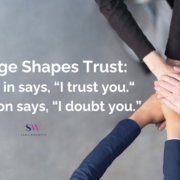
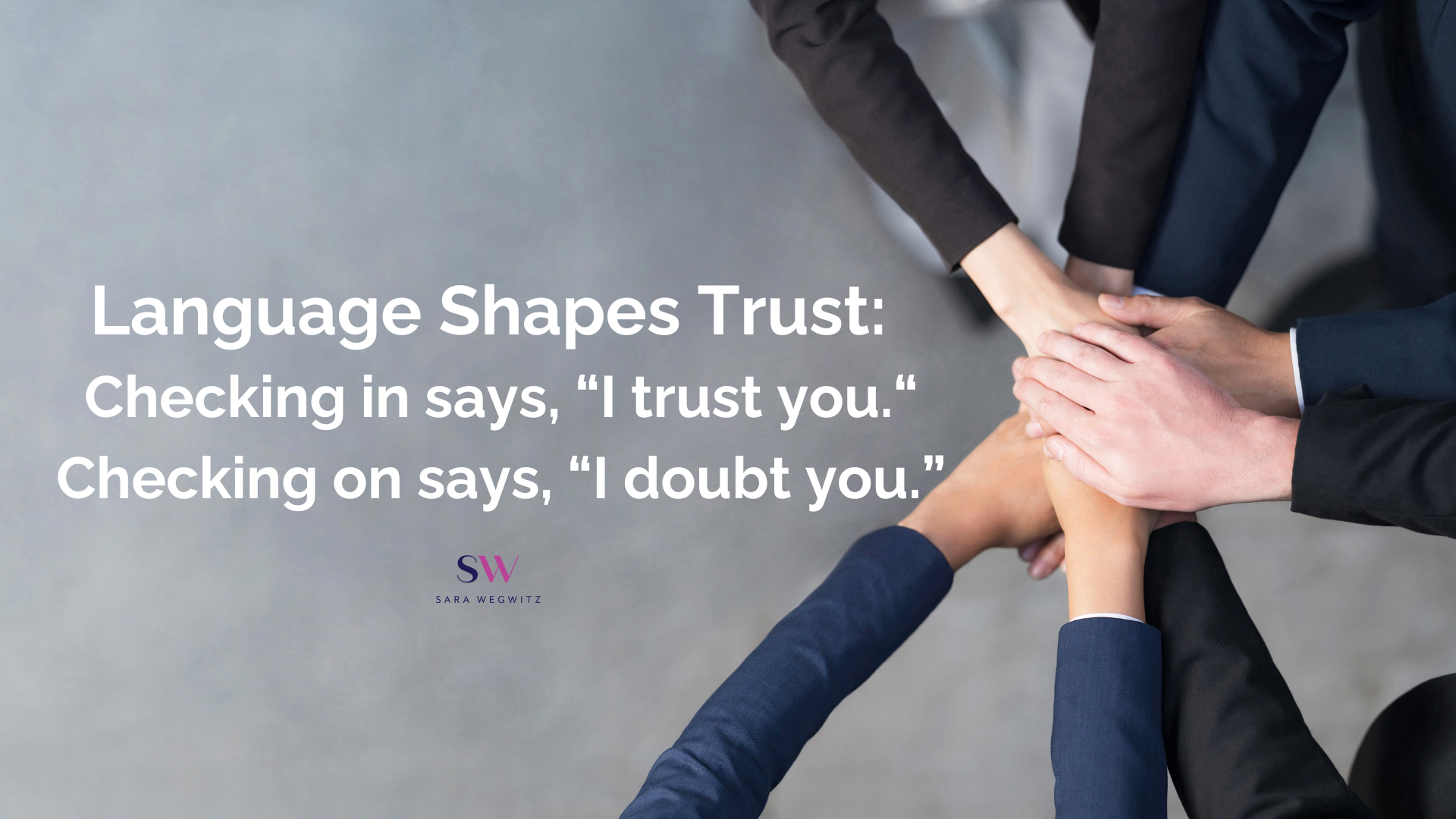 Leadership is often defined by small, pivotal moments. Recently, I had one of those moments when a leader touched base with me ahead of a training session I was facilitating for her team.
Leadership is often defined by small, pivotal moments. Recently, I had one of those moments when a leader touched base with me ahead of a training session I was facilitating for her team.
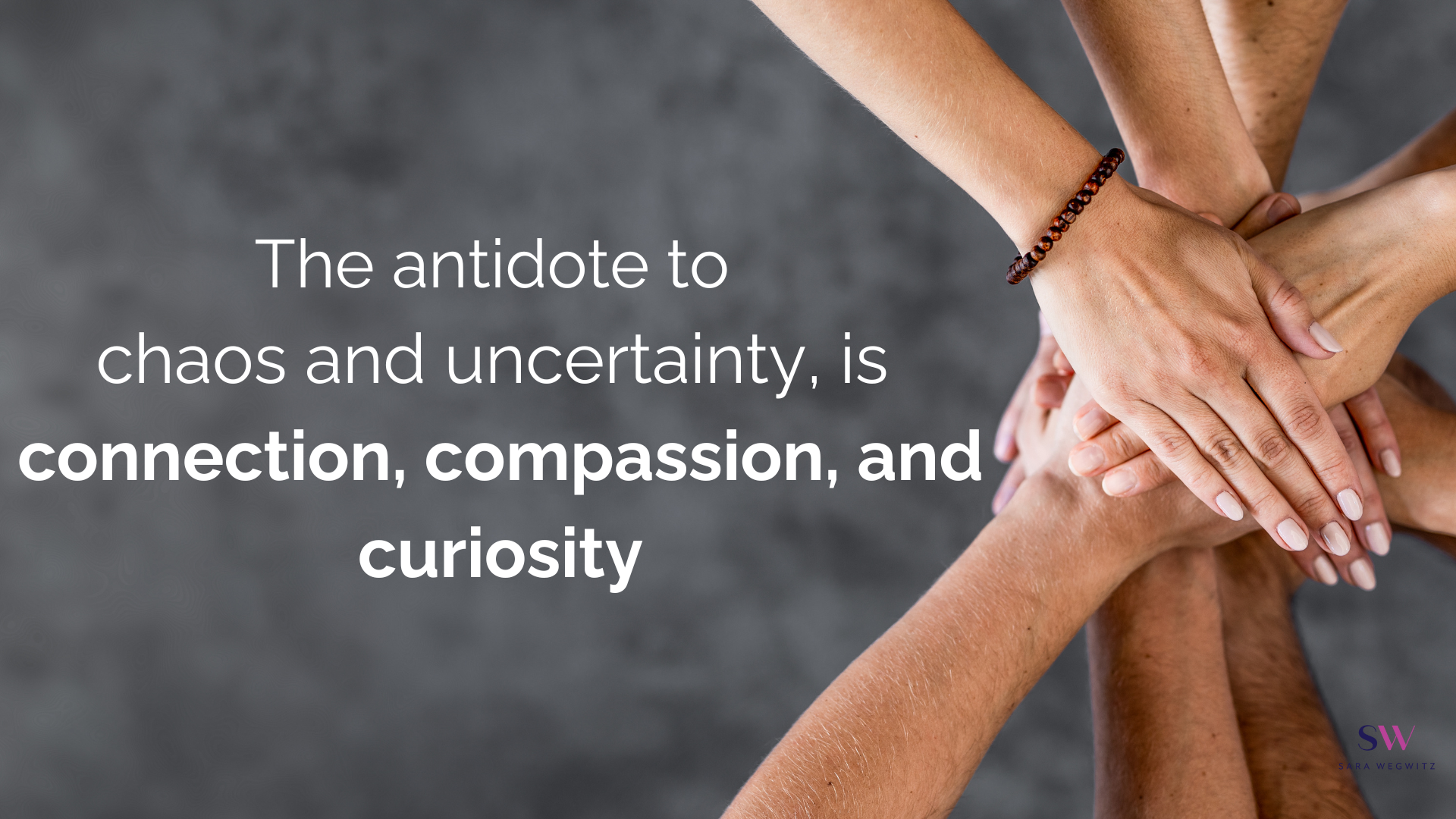 The world of work is shifting rapidly. From navigating economic uncertainties and technological advancements to grappling with the ongoing challenges of remote and hybrid work, the way we lead and work together is changing. For leaders, this presents a vital question: How do we prepare our teams not just to survive, but to thrive in this unpredictable landscape?
The world of work is shifting rapidly. From navigating economic uncertainties and technological advancements to grappling with the ongoing challenges of remote and hybrid work, the way we lead and work together is changing. For leaders, this presents a vital question: How do we prepare our teams not just to survive, but to thrive in this unpredictable landscape?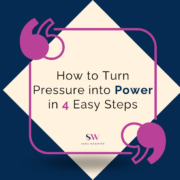


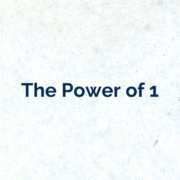

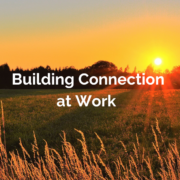
 In the ever-evolving landscape of modern workplaces, the words of the 13th-century poet Rumi still resonate profoundly: “Out beyond ideas of wrongdoing and right-doing, there is a field. I will meet you there.” These words serve as a poignant reminder of the importance of creating a space where all voices can be heard, a space where nuance, tolerance, respect, and acceptance flourish.
In the ever-evolving landscape of modern workplaces, the words of the 13th-century poet Rumi still resonate profoundly: “Out beyond ideas of wrongdoing and right-doing, there is a field. I will meet you there.” These words serve as a poignant reminder of the importance of creating a space where all voices can be heard, a space where nuance, tolerance, respect, and acceptance flourish.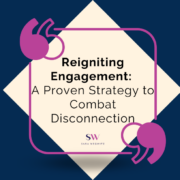
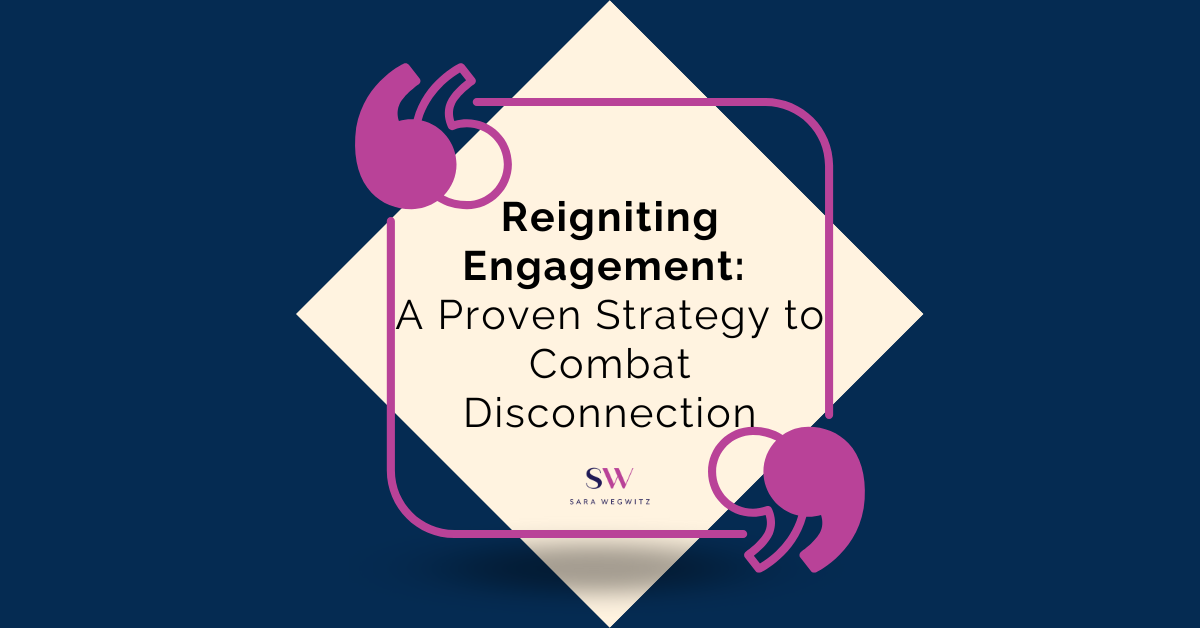 Have you observed a decline in engagement lately? This is a common challenge faced by many teams. During my interactions with workplace teams, while conducting psychological safety training, I’ve come to realize the importance of addressing a fundamental question. I encourage individuals to take a moment and reflect: “As Sunday night approaches or the evening before you head back to work, how do you feel? What thoughts arise?”
Have you observed a decline in engagement lately? This is a common challenge faced by many teams. During my interactions with workplace teams, while conducting psychological safety training, I’ve come to realize the importance of addressing a fundamental question. I encourage individuals to take a moment and reflect: “As Sunday night approaches or the evening before you head back to work, how do you feel? What thoughts arise?”